Scientific name Torpediniformes Phylum Chordata Subclass Elasmobranchii | Higher classification Batoids Rank Order | |
Lower classifications | ||
Electric ray attack pacific torpedo ray
The electric rays are a group of rays, flattened cartilaginous fish with enlarged pectoral fins, comprising the order Torpediniformes. They are known for being capable of producing an electric discharge, ranging from 8 to 220 volts, depending on species, used to stun prey and for defense. There are 69 species in four families.
Contents
- Electric ray attack pacific torpedo ray
- Joe finds out why it is called an electric ray
- Description
- Relationship to humans
- Bioelectricity
- Systematics
- References
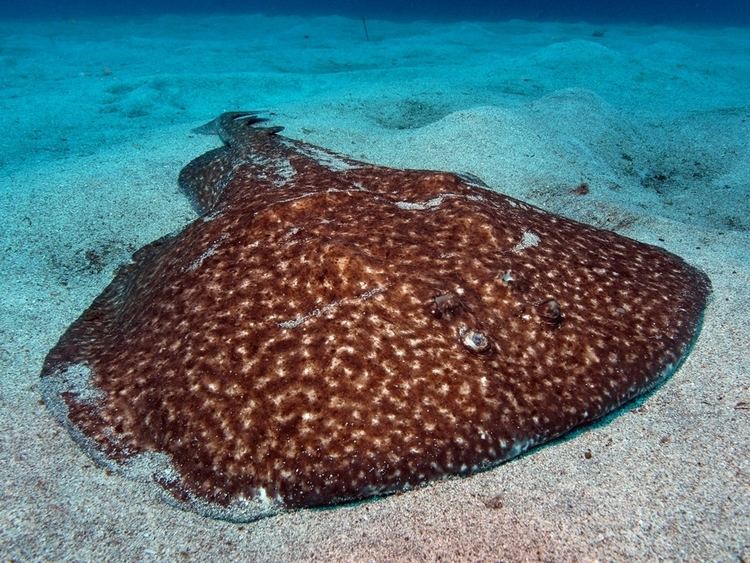
Perhaps the best known members are those of the genus Torpedo, also called crampfish and numbfish. (The device called a torpedo is named after it.) The name comes from the Latin torpere, to be stiffened or paralyzed, referring to the effect on someone who handles or steps on a living electric ray.
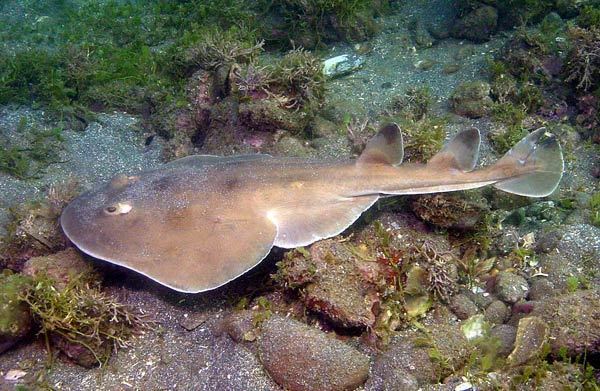
Joe finds out why it is called an electric ray
Description
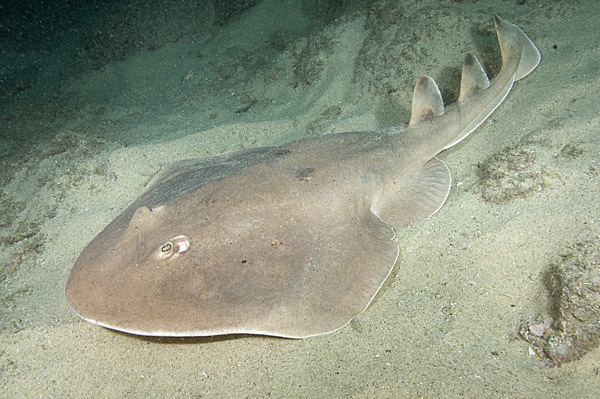
Electric rays have a rounded pectoral disc with two moderately large rounded-angular (not pointed or hooked) dorsal fins (reduced in some narkids), and a stout muscular tail with a well-developed caudal fin. The body is thick and flabby, with soft loose skin with no dermal denticles or thorns. A pair of kidney-shaped electric organs are at the base of the pectoral fins. The snout is broad, large in the Narcinidae, but reduced in all other families. The mouth, nostrils, and five pairs of gill slits are underneath the disc.
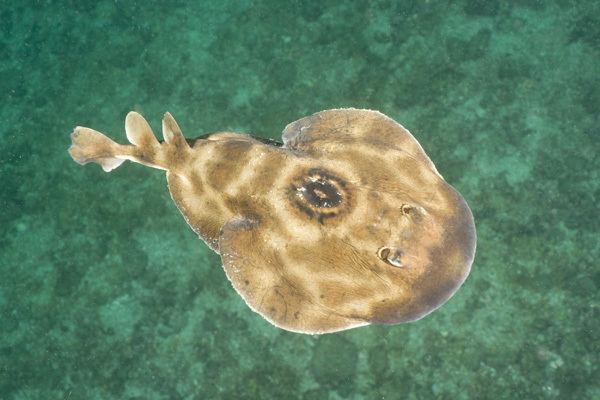
Electric rays are found from shallow coastal waters down to at least 1,000 m (3,300 ft) deep. They are sluggish and slow-moving, propelling themselves with their tails, not by using their pectoral fins as other rays do. They feed on invertebrates and small fish. They lie in wait for prey below the sand or other substrate, using their electricity to stun and capture it.
Relationship to humans
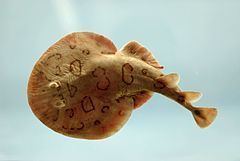
The electrogenic properties of electric rays have been known since antiquity. The ancient Greeks used electric rays to numb the pain of childbirth and operations. In his dialogue Meno, Plato has the character Meno accuse Socrates of "stunning" people with his puzzling questions, in a manner similar to the way the torpedo fish stuns with electricity. Scribonius Largus, a Roman physician, recorded the use of torpedo fish for treatment of headaches and gout in his Compositiones Medicae of 46 AD. The torpedo fish, or electric ray, appears continuously in premodern natural histories as a magical creature, and its ability to numb fishermen without seeming to touch them was a significant source of evidence for the belief in occult qualities in nature during the ages before the discovery of electricity as an explanatory mode.
Bioelectricity

The electric ray may be the most electrosensitive of all animals. Their eyes are on the top of their heads, resulting in poor vision that must be compensated for with the use of other senses, including detecting electricity. Many species of rays and skates outside the family have electric organs in the tail; however, the electric ray has two large electric organs on each side of its head, where current passes from the lower to the upper surface of the body. The organs are governed by four central nerves from each side of the electric lobe, or specialized brain lobe, which is of a different color from the rest of the brain. The main nerves branch repeatedly, then attach to the lower side of each plate in the batteries, which are composed of hexagonal columns, in honeycomb formation: each column consists of 140 to half a million gelatinous plates. In marine fish, these batteries are connected as a parallel circuit where freshwater batteries are found in series, transmitting discharges of higher voltage, as fresh water cannot conduct electricity as well as salt water. With such a battery, an average electric ray may electrocute larger prey with a current of up to 30 amperes and a voltage of 50 to 200 volts, a similar effect to dropping a mains-powered hair dryer (large appliance plug of 110/220 volts in North America) into a bathtub.
Systematics
The 60 or so species of electric rays are grouped into 12 genera and two families. The Narkinae are sometimes elevated to a family, the Narkidae. The torpedinids feed on large prey, which are stunned using their electric organs and swallowed whole, while the narcinids specialize on small prey on or in the bottom substrate. Both groups use electricity for defense, but it is unclear whether the narcinids use electricity in feeding.
